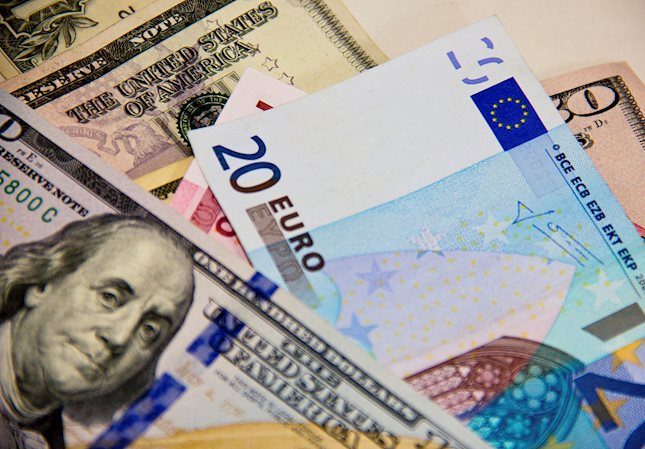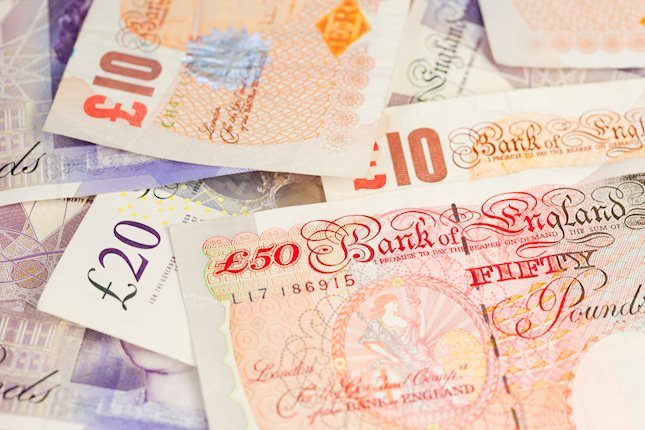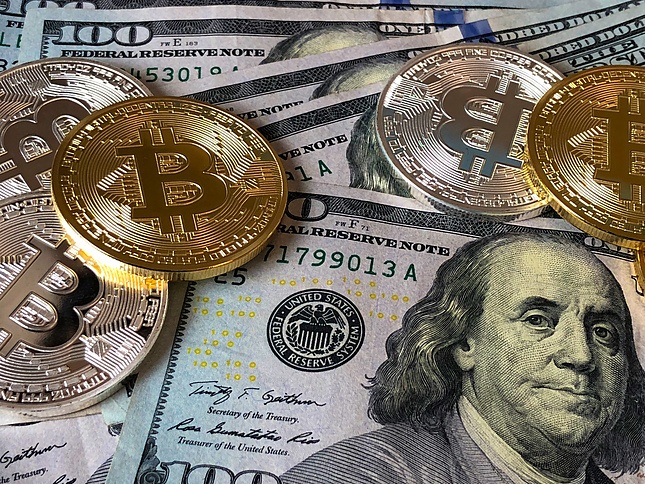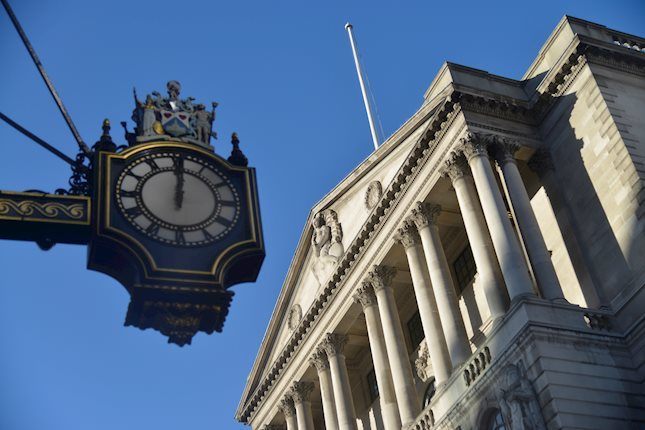Markets
The US yield curve finished last week with a little steepening. Net daily changes varied between -0.2 bps (2-yr) to +5.2 bps (30-yr), underpinned by second-tier data including decelerating and slightly below-consensus September PPIs. October consumer confidence (U. of Michigan) missed the bar as well. The headline index fell to 68.9 from 70.1 with both the current assessment and outlook deteriorating. The 1-yr ahead inflation gauge picked up from 2.7% to 2.9%, the 5-yr one eased as expected to 3%. German yields closed little changed due to a late-session swoon that erased much of the 4-5 bps gains earlier on the day. Major currencies were little changed against the dollar amid US markets sleepwalking into a long weekend. A healthy risk appetite (stocks 0.3-1% higher) was the main force pushing the likes of the NOK and SEK as well as cyclicals such as the Aussie & kiwi dollar a little higher. China’s yuan strengthened a bit in the run-up to a highly anticipated announced by the country’s finance minister on Saturday. After the economic planning agency underwhelmed earlier in the week, hopes ran high for Lan Fo’an to come big this time – to the tune of CNY 2tn. But while promising further steps to support the property sector and hinting at greater borrowing, investors were left in the dark by not putting a price tag on it. Chinese stock markets this morning trade volatile, swinging from gains to losses back to gains of currently 2.3% (CSI300). After the barrage of (pledged) fiscal and monetary measures in a short period of time, markets seem to give the government the benefit of the doubt. The need for a growth supporting policy pivot is increasingly apparent following another poor inflation reading for September. Consumer prices rose a mere 0.4%, undershooting the August-matching 0.6% consensus. Services inflation came in at only 0.2% y/y while core inflation barely stayed positive (0.1%, lowest since February 2021). Producer prices ventured deeper in negative territory (-2.8% from -1.8% and vs -2.6% expected). Factory inflation has been negative for two years straight (!) now. The yuan gapped lower at the open but pared losses in the meantime to USD/CNY 7.07. US markets are closed today for Columbus Day but a speech by Fed’s Waller on the economic outlook is worth watching. An otherwise empty European calendar paves the way for technically insignificant trading ahead of other events this week, including the ECB policy meeting. A 25 bps cut which was ruled out after the September meeting is now all but certain after disastrous PMIs and inflation numbers confirming ongoing disinflation.
News and views
Rating agency Moody’s late Friday affirmed Belgium’s credit rating at Aa3 but changed the outlook from stable to negative. The rating agency said the decision to change the outlook reflects the risks that the next government will be unable to implement measures that would stabilize the government debt burden. According to Moody’s, the previous government made some small fiscal consolidation efforts, but they were not structural in nature. In the absence of a large fiscal consolidation programme, Moody’s says that debt will continue to rise due to the material structural increase in expenditures in recent years and persistent spending pressure. It expects the political economy of deficit and debt reduction may become more challenging in the future because of structural headwinds to fiscal consolidation. A large fiscal consolidation effort will require effort at all levels of government. In this respect Moody’s says that Belgium lacks intergovernmental coordination mechanisms to achieve this effort.
Rating agency Fitch on Friday cut the outlook on France’s rating from stable to negative. It affirmed the country’s rating at AA-. Moody’s sees a difficult fiscal policy ahead, as fiscal risks have increased since the previous review. This year’s projected fiscal slippage is placing the country in a worse starting position. Fitch expects wider deficits leading to a steep rise in debt toward 118.5% of GDP in 2028. High political fragmentation and a minority government complicate the country’s ability to deliver on sustainable fiscal consolidation. The government presented a sizeable package to bring the deficit to 5.0% of GDP by 2025 but some of the measures are temporary. All measures are worth €60 bn (or 2% of GDP) but the agency included only a part due to political uncertainty and implementation risks. The 2024 deficit is expected to widen to 6.1% GDP which exceeds Fitch’s forecast of 5.1%. Fitch raised the fiscal deficit for 2025 and 2026 to 5.4% and doesn’t expect the government to meet its revised deficit forecast to bring the deficit to 3.0% by 2029. Fitch expects the debt to GDP ratio to rise to 116.3% by end 2026.
This non-exhaustive information is based on short-term forecasts for expected developments on the financial markets. KBC Bank cannot guarantee that these forecasts will materialize and cannot be held liable in any way for direct or consequential loss arising from any use of this document or its content. The document is not intended as personalized investment advice and does not constitute a recommendation to buy, sell or hold investments described herein. Although information has been obtained from and is based upon sources KBC believes to be reliable, KBC does not guarantee the accuracy of this information, which may be incomplete or condensed. All opinions and estimates constitute a KBC judgment as of the data of the report and are subject to change without notice.
Recommended Content
Editors’ Picks

EUR/USD extends recovery beyond 1.0400 amid Wall Street's turnaround
EUR/USD extends its recovery beyond 1.0400, helped by the better performance of Wall Street and softer-than-anticipated United States PCE inflation. Profit-taking ahead of the winter holidays also takes its toll.

GBP/USD nears 1.2600 on renewed USD weakness
GBP/USD extends its rebound from multi-month lows and approaches 1.2600. The US Dollar stays on the back foot after softer-than-expected PCE inflation data, helping the pair edge higher. Nevertheless, GBP/USD remains on track to end the week in negative territory.

Gold rises above $2,620 as US yields edge lower
Gold extends its daily rebound and trades above $2,620 on Friday. The benchmark 10-year US Treasury bond yield declines toward 4.5% following the PCE inflation data for November, helping XAU/USD stretch higher in the American session.

Bitcoin crashes to $96,000, altcoins bleed: Top trades for sidelined buyers
Bitcoin (BTC) slipped under the $100,000 milestone and touched the $96,000 level briefly on Friday, a sharp decline that has also hit hard prices of other altcoins and particularly meme coins.

Bank of England stays on hold, but a dovish front is building
Bank of England rates were maintained at 4.75% today, in line with expectations. However, the 6-3 vote split sent a moderately dovish signal to markets, prompting some dovish repricing and a weaker pound. We remain more dovish than market pricing for 2025.

Best Forex Brokers with Low Spreads
VERIFIED Low spreads are crucial for reducing trading costs. Explore top Forex brokers offering competitive spreads and high leverage. Compare options for EUR/USD, GBP/USD, USD/JPY, and Gold.